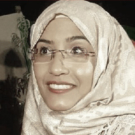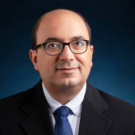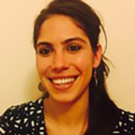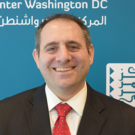Speakers

Huda Abu Obaid
Community Organizer; Advocacy Coordinator at Negev Coexistence Forum for Civil Equality

Sami Abu Shehadeh
Palestinian Historian; Leader of Balad/ Tajamu Party; Member of the Israeli Knesset for the Joint List

Rawia Aburabia
Assistant Professor of Law, Sapir Academic College School of Law

Riya Al’Sanah
Palestinian Researcher and Activist from Lakiya Village in the Naqab

Mansour Nasasra
Author and Lecturer in Middle East Politics and International Relations, Ben Gurion University of the Negev
Moderator
About the Webinar
On January 27, 2022, Arab Center Washington DC (ACW) hosted a webinar titled “Israel’s Continuing Policy of Palestinian Dispossession: From Sheikh Jarrah to Al-Naqab.” Speakers were Sami Abu Shehadeh, a Palestinian historian, leader of the Balad/ Tajamu Party, and Member of the Israeli Knesset for the Joint List; Riya Al’Sanah, a Palestinian researcher and activist from Lakiya Village in the Naqab; Rawia Aburabia, Assistant Professor of Law at Sapir Academic College School of Law; Mansour Nasasra, author and lecturer in Middle East Politics and International Relations at Ben Gurion University of the Negev; and Huda Abu Obaid, a community organizer and Advocacy Coordinator at Negev Coexistence Forum for Civil Equality. The moderator was Yousef Munayyer, ACW fellow and host of ACW’s podcast, “Five Questions.”
Sami Abu Shehadeh offered a historical background for current events in the Naqab, noting that Israel’s dispossession policies are not new and have been in practice since the Nakba started in 1948. He said that only about 11,000 Bedouins were left in the area immediately after the ethnic cleansing of that time, which represented about 10 percent of their original number, and that generations later, Israel continues to treat them as enemies and not as citizens. It forcibly expelled them from their original lands and placed them in an area called the Siyaj, northeast of Bir al-Sab`. Abu Shehadeh asserted the importance of the Naqab, which represents more than half the area of historic Palestine. At present, he added, Palestinian citizens of the Naqab live on only 3 percent of the land, and Israel continues to dispossess them of their homes and livelihoods. He described this as a two-pronged colonial approach whereby Israel is circumscribing the lands of the indigenous community, making large numbers of Bedouins live on shrinking amounts of land, while bringing in outsiders—Jewish Israelis—to take their place. This is part of a larger Judaization policy throughout the area, he said, and the entire Zionist project was “built on racial separation.”
Abu Shehadeh affirmed that the main political actors in the Naqab now are settler Jewish nongovernmental organizations that control important decision-making processes in the Knesset, led by Prime Minister Naftali Bennett. They characterize the Bedouins as “invaders” who are “trying to steal the land” from the Israeli state—but Abu Shehadeh said that what is really happening on the ground is that settlers are the ones actually stealing the land. He stated that the ruling coalition in Israel and all the parties compete in racist and extremist speech and treatment of Palestinians. He cited an example of the recent demonstration in the Sa`weh area, in which thousands of people from the Naqab and outside were immediately attacked and chased by armed forces and security police using rubber bullets and tear gas.
Riya Al’Sanah noted that the Naqab is actually not a desert, as the northern part is an agrarian area that is rich agricultural land and an important source of livelihood. She said that the political terrain in Palestine has shifted over the last year and a half, highlighting three main reasons. First is the replacement of the traditional representation of Palestinian aspirations on the international stage by new media of communication, with younger people in the forefront of the struggle who speak more defiantly and eloquently in asserting justice and liberation. As an example, she pointed to the al-Kurd siblings and their impressive engagement with the media, garnering support internationally. She added that these young people, speaking in both English and Arabic, are taking the reins and contextualizing information based on what is happening in their communities.
The second shift, Al’Sanah explained, is on the level of political discourse, which since the Oslo Accords in 1994 has propounded a fragmented view of Palestinians—as discrete groups in the West Bank, Gaza, and inside Israel. She said that the Naqab is a massive victim of this strategy of fragmentation, as the area has been marginalized from the Palestinian political struggle since 1948 and its inhabitants continue to experience extreme levels of colonial violence. At present and across Palestine, she said, the particularities of the locals (like those in the Naqab) are no longer being sidelined; she added that “the story of Naqab as a whole is the story of Palestine as a whole.” Al’Sanah asserted that the mass uprising in May 2021 proved that the Naqab was not disconnected from the rest of the Palestinian story. She concluded with what she perceived as the third political shift: the increased level of integration of socioeconomic issues within the broader conversation. One salient example, she noted, was the involvement of women who are changing the shape of the struggle—which is not new, she said, as they have always been part of it. She explained that feminist notions have pushed the development of mechanisms of solidarity from below, from the entire community, giving the example of heightened efforts to support Palestinian detainees in Israeli jails.
Rawia Aburabia reiterated that the Bedouins have suffered severe discrimination since 1948 in the allocation of land resources, planning, housing, and the Israeli state’s nonrecognition of their villages and land ownership. In fact, she said, Israel’s master plan for the northern Naqab ignored residents and land rights entirely, viewing them as “squatters” on the land, and this resulted in the prohibition of residential construction and issuing of building permits. She explained that the reason members of the Bedouin community build houses or additions without permits is simply out of necessity. Further, the 35 unrecognized villages are not connected to water sources or the electricity grid; basic services, such as education, suffer greatly. Aburabia added that this policy of marginalization and denial of essential services is a means of punishment and pressure to move members of the Bedouin community to the seven townships in the Siyaj area.
In the Bir al-Sab` area at present, Aburabia noted, there are more than 100 settlements populated by Israeli Jews. One way the government tries to acquire additional land is by using the legal doctrine of mawat, or dead land, that is classified as uncultivated and uninhabited. She said that this ignores the Bedouins’ traditional land acquisition system and deeds that were recognized by Ottoman laws and the British. In the end, the Bedouin community is clearly facing an entire legal system that does not recognize it and its rights, which is contrary to international law (to which Israel is a signatory). She explained that as indigenous people, Bedouins must be protected under international law and must not be removed from their ancestral lands and resettled. Indeed, their situation has been addressed in numerous UN reports, she added, concluding that Israel must abide by international human rights law and the various UN charters, as it is obliged to follow these standards in both principle and practice. She stresseded that civil society has an important role in that it provides shadow reports, monitors violations, and raises awareness in the international community.
Mansour Nasasra linked the situation in the Naqab with Israel’s policies of dispossession that continue to unfold in the Sheikh Jarrah neighborhood of East Jerusalem. This settler colonial approach, he said, involves erasing the native population, controlling the economy and the land, and entrenching Judaization. Geopolitically, he asserted that the northern and western parts of the Naqab are important strategically because they border Egypt and are close to Hebron and Gaza; they are also linked to the city of Bir al-Sab`. In addition, it is critical to recognize that the Naqab is a wealthy agrarian region in terms of the cultivation of wheat and barley. He said that Israel continues to withhold electricity and water and other fundamental services to the Bedouin community, to “keep them poor and struggling every day,” whereas private Jewish-owned farms receive these services quickly and easily from the state. Similarly, Palestinian East Jerusalem and Israeli West Jerusalem are like “two different worlds,” Nasasra added, with the marginalized Palestinian community in East Jerusalem receiving a fraction of the services that it requires—and of the allotment for West Jerusalem.
For the Sheikh Jarrah area, Nasasra continued, Israel’s actions are meant to erase the green line in Jerusalem and get rid of the whole idea of a Palestinian state with its capital in this territory. East Jerusalem comprises rich Islamic history and many Palestinian neighborhoods, universities, and cultural institutions, so Israel’s expulsion of people and destruction of Palestinian homes will allow it to control the area and erase the borders of the Palestinian state. It is speeding up the dispossession despite the fact that East Jerusalem is considered occupied territory under international law. It is all about sovereignty and borders, Nasasra affirmed.
Huda Abu Obaid focused on the importance of community organizing and mobilization, and especially on the role of women and youth, bringing to the table her experience as a community organizer in the Naqab town of Lakiya. She asserted that the current situation of the Bedouins should be understood in historical context, noting that the first legal appeal of the Bedouin community regarding their lands was submitted to the Israeli supreme court in 1952. Abu Obaid said that because of harsh military rule, the community was not able to start to organize its resistance to dispossession until the end of the 1960s, with the first real coalescing of unity beginning in the 1980s. After the Oslo agreements, she said that Palestinians felt that their leadership had given up on the Palestinians of 1948, which helped to spur the development of new Palestinian civil society organizations in Israel like Adalah, the Mossawa Center, the Negev Coexistence Forum for Civil Equality, and the Regional Council of Unrecognized Villages. These organizations challenged the government in the courts to demand rights for the Palestinian community, including the right of access to water, building schools in villages, and the like.
Abu Obaid described the new generation of activists—those who did not have the experience of living under military rule—as not scared of the Israeli state or police, noting that they are more emboldened than previous generations. She spoke about civil society and its efforts in the Naqab, stressing that the role of women is crucial—and adding, also, that Palestinian women have always been a part of protests, leading civil and social campaigns for rights.

